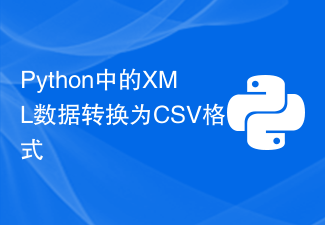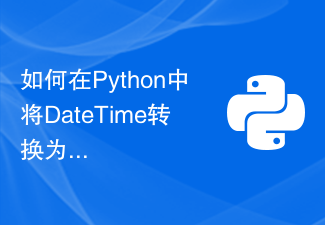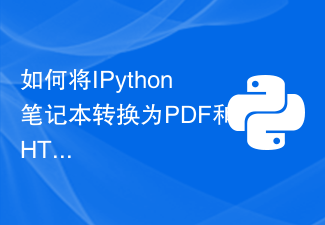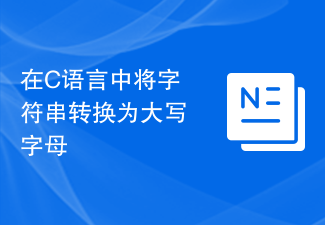Regarding the difference between px, pt and em, I sometimes struggle with which unit to use. I checked some articles today. Although the following article is very old, it explains it more comprehensively. I repost it for collection. Click to view the original text (the original URL has expired, this is another site)
The article quoted here is Jorux's "95% of Chinese websites need to rewrite CSS". The title is a bit scary, but it is indeed the current domestic web page. Some production flaws. I have never been able to figure out the relationship and characteristics between px and em. After reading it, I really learned a lot. Usually px is used to define fonts, so the browser font amplification function cannot be used, and most foreign websites can be used under IE. Because:
1. IE cannot adjust the font size that uses px as the unit;
2. The reason why most foreign websites can adjust is that they use em as the font unit;
3. Firefox can adjust px and em, but more than 96% of Chinese netizens use IE browser (or kernel).
Px pixel (Pixel) is a relative unit of length, and pixel px is relative to the monitor screen resolution. (Quoted from the CSS2.0 manual)
em is a relative length unit, relative to the font size of the text within the current object. If the current font size for inline text has not been manually set, it will be relative to the browser's default font size. (Quoted from the CSS2.0 manual)
Using em as the font unit can support font scaling under IE6. If you press ctrl+scroll wheel on the page, websites with fonts in px units will not respond.
px is an absolute unit and does not support IE scaling.
em is a relative unit, and the text on the web page can be enlarged and reduced. Use em for line-height and vertical height units. Ensure integrity when scaling.
The default font height of any browser is 16px. All unmodified browsers conform to: 1em=16px. Then 12px=0.75em,10px=0.625em. In order to simplify the conversion of font-size, you need to declare Font-size=62.5% in the body selector in CSS, which makes the em value become 16px*62.5%=10px, so 12px=1.2em, 10px=1em, also That is to say, you only need to divide your original px value by 10, and then change to em as the unit.
em has the following characteristics:
1. The value of em is not fixed;
2. em will continue the font size of the parent element.
So when we write CSS, we need to pay attention to:
1. Declare Font-size=62.5% in the body selector; (Font-size=63% ; for ie6 compatibility)
2. Divide your original px value by 10, and then replace it with em as the unit;
3. Recalculate the em value of those enlarged fonts . Avoid repeated declarations of font sizes.
That is to avoid the phenomenon of 1.2 * 1.2= 1.44. For example, if you declare the font size to be 1.2em in #content, then when you declare the font size of p, it can only be 1em, not 1.2em, because this em is not the other em, and it is due to the font height of #content. It became 1em=12px.
However, the exception is 12px Chinese characters. The 12px (1.2em) Chinese characters obtained by the above method are not equal to the font size directly defined by 12px in IE, but are slightly larger. This problem has been solved by Jorux. Just change 62.5% to 63% in the body selector and it will display normally. The reason may be that when IE processes Chinese characters, the accuracy of floating point values is limited. I don't know if there is any other explanation.
Explanation of the unit pt
In printing and typesetting, point is an absolute value, which is equal to 1/72 inch, a physical inch that can be measured with a ruler. But the meaning of pt in CSS is not the same. Because our monitor is divided into pixels, a single pixel can only have one color (for simplicity, we will not discuss sub-pixel anti-aliasing technology here). To display it on the screen, we must first convert the length in pt units. is the length in pixels, and the medium for this conversion is DPI (in fact, the so-called DPI here is a term used in operating systems and browsers, that is, PPI, pixels per inch, and scanners, printers, DPI in digital cameras is a different concept).
For example, no matter which operating system it is in, the default DPI of Firefox browser is 96, then in fact 9pt = 9 * 1/72 * 96 = 12px.
So, although the "I" in "DPI" and the "inch" in "1pt is equal to 1/72 inch" do not represent physical inches, the two units are equal to each other. , it is eliminated in the multiplication.
So, how to calculate the real physical length? Please take out a ruler, measure the visible width of your monitor (in my case it is 11.2992 inches), and divide it by the horizontal resolution (in my case it is 1024 pixels) , what is obtained is the physical length of each pixel.
Now we can answer the question, how much space does the 9pt font on the web page take up? The answer is: 9 * 1/72 * 96 * 11.2992 / 1024 = 0.1324 inches = 0.3363 centimeters.
Although pt is an absolute unit, it is only for output devices. It is a very useful font unit in text typesetting tools (word, abobe). No matter what the resolution of the monitor is, the result printed on paper is the same.
But the web page is mainly for screen display, not for printing and other needs. And px can accurately represent the position and size of elements on the screen.
certainly. When dpi is 96, 9pt=12px.
Attached is the conversion table of px, em, % and pt

Conversion table of px, em, % and pt
The above is the detailed content of The conversion between px, em, and pt units and their differences. For more information, please follow other related articles on the PHP Chinese website!
 Python中的XML数据转换为CSV格式Aug 11, 2023 pm 07:41 PM
Python中的XML数据转换为CSV格式Aug 11, 2023 pm 07:41 PMPython中的XML数据转换为CSV格式XML(ExtensibleMarkupLanguage)是一种可扩展标记语言,常用于数据的存储和传输。而CSV(CommaSeparatedValues)则是一种以逗号分隔的文本文件格式,常用于数据的导入和导出。在处理数据时,有时需要将XML数据转换为CSV格式以便于分析和处理。Python作为一种功能强大
 如何在Python中将DateTime转换为整数?Sep 05, 2023 pm 10:21 PM
如何在Python中将DateTime转换为整数?Sep 05, 2023 pm 10:21 PM日期和时间值的操作是编程的一个重要方面,Python语言为此提供了一个有用的内置模块,称为datetime。但是,在某些情况下,可能需要将DateTime对象转换为整数值,以便执行特定的操作或计算。在Python中将DateTime转换为整数有多种方法,每种方法都有自己的优点和缺点。在本文中,我们将深入研究这些方法并检查每种方法何时适合使用。读完本文后,您将全面了解如何在Python中有效地将DateTime对象转换为整数,并能够为您的特定编程任务选择最合适的方法。方法一:使用timestamp
 你将如何将MATLAB代码转换为Python代码?Aug 19, 2023 pm 10:53 PM
你将如何将MATLAB代码转换为Python代码?Aug 19, 2023 pm 10:53 PMMATLAB是一种广泛应用于工程和科学领域的流行编程语言,但由于其灵活性和适应性,Python正迅速成为许多程序员的首选语言。如果您想将MATLAB代码转换为Python代码,一开始可能会感到非常困难。然而,通过正确的知识和方法,您可以使这个过程变得更加容易。以下是一些步骤,帮助您将MATLAB代码转换为Python:步骤1:熟悉Python语法Python和MATLAB具有独特的语法,因此在开始转换代码之前,您需要熟悉Python语法。花一些时间了解Python语法基础知识,包括变量、数据类型
 如何将IPython笔记本转换为PDF和HTML?Sep 08, 2023 pm 08:33 PM
如何将IPython笔记本转换为PDF和HTML?Sep 08, 2023 pm 08:33 PMIPython笔记本是一种非常流行的科学计算和数据分析工具,被研究人员、分析师和程序员广泛使用。通过允许用户将代码、文本和交互式可视化集成到单个文档中,它们使探索数据、开发模型和交流结果变得简单。然而,与其他人共享IPython笔记本可能很困难,特别是当接收者缺乏运行它们所需的软件或专业知识时。应对这一挑战的一个解决方案是将IPython笔记本转换为PDF和HTML,它们受到普遍支持,并且可以在任何设备上轻松访问。在本文中,我们将深入研究将IPython笔记本转换为PDF和HTML的三种方法,其
 使用json.Marshal函数将结构体转换为JSON字符串Jul 24, 2023 pm 12:54 PM
使用json.Marshal函数将结构体转换为JSON字符串Jul 24, 2023 pm 12:54 PM使用json.Marshal函数将结构体转换为JSON字符串在Go语言中,可以使用json.Marshal函数将结构体转换为JSON字符串。结构体是一种由多个字段组成的数据类型,而JSON是一种常用的轻量级数据交换格式。将结构体转换为JSON字符串可以方便地在不同系统之间交换数据。下面是一个示例代码:packagemainimport(&q
 在C语言中将字符串转换为大写字母Aug 30, 2023 pm 09:01 PM
在C语言中将字符串转换为大写字母Aug 30, 2023 pm 09:01 PM这是一个将字符串转换为大写字母的C语言程序示例:示例#include<stdio.h>#include<string.h>intmain(){ chars[100]; inti; printf("Enterastring:"); gets(s); for(i=0;s
 Golang函数的byte、rune和string类型转换技巧May 17, 2023 am 08:21 AM
Golang函数的byte、rune和string类型转换技巧May 17, 2023 am 08:21 AM在Golang编程中,byte、rune和string类型是非常基础、常见的数据类型。它们在处理字符串、文件流等数据操作时发挥着重要作用。而在进行这些数据操作时,我们通常需要对它们进行相互的转换,这就需要掌握一些转换技巧。本文将介绍Golang函数的byte、rune和string类型转换技巧,旨在帮助读者更好地理解这些数据类型,并能够熟练地在编程实践中应用
 Vue中实现HTML到HTMLDocx的转换:一种高效的文档生成方式Jul 24, 2023 am 11:43 AM
Vue中实现HTML到HTMLDocx的转换:一种高效的文档生成方式Jul 24, 2023 am 11:43 AMVue中实现HTML到HTMLDocx的转换:一种高效的文档生成方式在现代web开发中,我们经常会遇到将HTML内容转换为其他格式的需求,其中一种常见的需求是将HTML转换为Word文档。本文将介绍一种在Vue中实现HTML到HTMLDocx转换的高效方式,并提供相关代码示例和演示。HTMLDocx是一种用于将HTML转换为Word文档的JavaScript


Hot AI Tools

Undresser.AI Undress
AI-powered app for creating realistic nude photos

AI Clothes Remover
Online AI tool for removing clothes from photos.

Undress AI Tool
Undress images for free

Clothoff.io
AI clothes remover

AI Hentai Generator
Generate AI Hentai for free.

Hot Article

Hot Tools

SublimeText3 Mac version
God-level code editing software (SublimeText3)

SAP NetWeaver Server Adapter for Eclipse
Integrate Eclipse with SAP NetWeaver application server.

ZendStudio 13.5.1 Mac
Powerful PHP integrated development environment

mPDF
mPDF is a PHP library that can generate PDF files from UTF-8 encoded HTML. The original author, Ian Back, wrote mPDF to output PDF files "on the fly" from his website and handle different languages. It is slower than original scripts like HTML2FPDF and produces larger files when using Unicode fonts, but supports CSS styles etc. and has a lot of enhancements. Supports almost all languages, including RTL (Arabic and Hebrew) and CJK (Chinese, Japanese and Korean). Supports nested block-level elements (such as P, DIV),

SublimeText3 English version
Recommended: Win version, supports code prompts!






